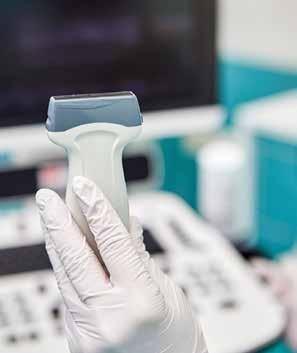AAEM/RSA COMMITTEE REPORT ADVOCACY
Surprise Emergencies Shouldn’t Have to Result in Surprise Bills Maryam Hockley, MD MPH and Kersti Bellardi
The Emergency Medical Treatment and Active Labor Act (EMTALA) became federal law in 1986. It was designed to guarantee access to life-saving medical care in emergencies regardless of a patient’s insurance status or ability to pay for such care.1 It is illegal under EMTALA for physicians to warn a patient that a particular hospital or physician group is out-of-network prior to providing care, as this is seen as an attempt to coerce patients into leaving without receiving appropriate care. EMTALA provides America’s medical safety net, but has never been funded by the federal government (even partially), resulting in an average of $140,000 per year in non-reimbursed or “charity” care being donated by every emergency physician in the country.1 Patients should not have to worry about hefty unexpected bills after an ED visit but many, even those visiting an in-network hospital, still receive a surprise bill after the fact. Here is a scenario to illustrate how this happens. One evening, Mr. Blud Claught’s wife called 911 after noticing that her husband’s speech was becoming incomprehensible. The left side of his face was drooping and he couldn’t hold up his left arm. The ambulance arrived shortly afterward and took him to the nearest ED. Once there, he was given tissue plasminogen activator (tPA) within two hours of symptom onset. Thankfully, he made a full recovery, but what Mr. and Mrs. Claught didn’t know was that, while the hospital was in-network, the emergency physician was out-of-network. Despite thinking they had done the right thing to avoid out of network charges this lovely couple was hit with extensive out-of-pocket expenses. A reasonable person might ask why did this happen? It is not always possible for a patient to know
50
COMMON SENSE JANUARY/FEBRUARY 2021
which hospitals and physician groups are in-network. Emergency physicians believe patients shouldn’t have to be concerned about that factor in a crisis, but thanks to the insurance industry the reality is much different. Many patients fear accessing care due to cost and don’t know how to find the lowest priced option. To make matters worse, many insurance companies often do not make current or accurate information available to patients regarding which physicians are in- or out-of-network. Additionally, depending on the nature of the emergency and which emergency department is closest, the patient may have no say in the matter.
fully cover emergency medical visits. This is unacceptable. Although insurers pretend to lobby for capping OON fees as a means of protecting patients, their real concern is lining their own pockets by enlarging their profit margins. It is important that we educate the public
EMERGENCY PHYSICIANS BELIEVE PATIENTS SHOULDN’T HAVE TO
BE CONCERNED ABOUT THAT FACTOR IN A CRISIS, BUT THANKS TO THE INSURANCE INDUSTRY THE REALITY IS MUCH DIFFERENT.”
In a 2011 survey of 7,812 patients, 4% (250) of respondents reported needing involuntary care with an out-of-network (OON) physician. Involuntary care was defined as either (1) due to a medical emergency, (2) the physician’s OON status was unknown at the time of care, or (3) an attempt was made to find an innetwork physician in the hospital but none were available. Of those 250 patients who received involuntary OON care, 58% resulted in further inpatient care incurring additional costs for specialists and the hospitalization. Furthermore, 68% of these in-patients originated from a medical emergency and 31% reported that the OON status of their care was unknown at the time.2 These distinctions are key because, for many patients, even though premiums have skyrocketed in recent years, benefits rarely
and our legislators on protecting our patients’ and nation’s medical safety net rather than the insurance industry, which is already one of the richest and most powerful corporate groups in America. Surprise billing happens in two stages: 1. First, insurers use differential cost-sharing to push patients towards in-network rather than out-of-network hospitals and physicians,3 because in-network providers have agreed to deeply discounted fees and this drastically reduces the insurer’s costs. Under a typical PPO plan, an in-network facility will bill the patient 20% of the total cost while an out-of-network provider will bill the patient 40%, with the rest billed to
>>























